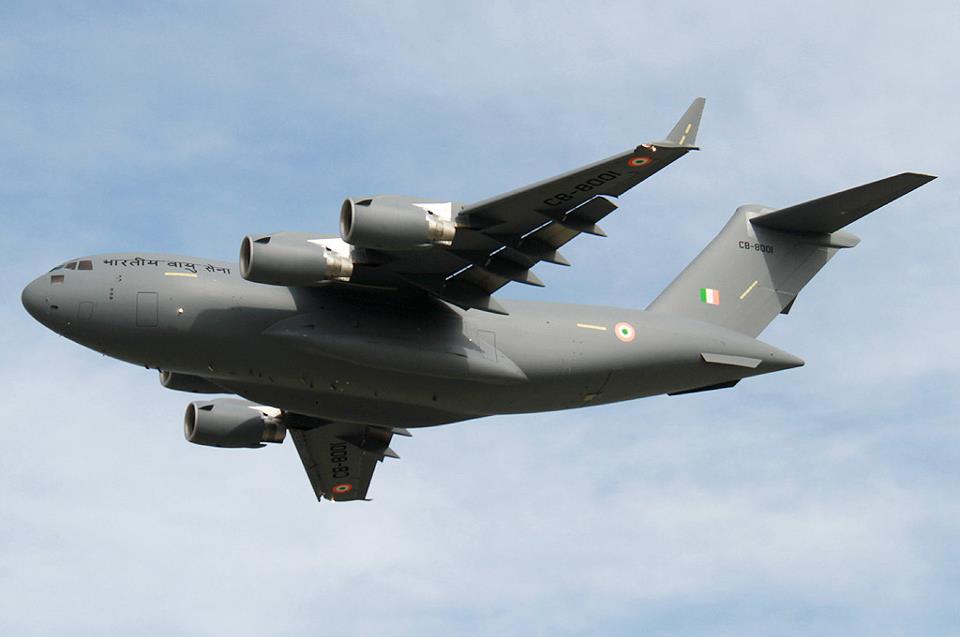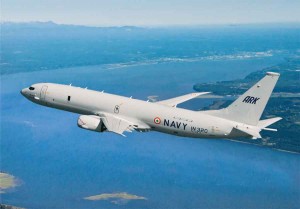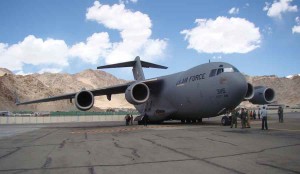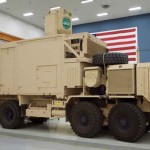The opening up of India’s defence and security market has created an opportunity for a strengthening partnership between Boeing and India. The Indian Navy selected the P-8I in January 2009 to fulfill long-range maritime reconnaissance and anti-submarine missions. The initial contract was for eight P-8Is, with an option for four additional aircraft. This was followed by a June 2011 order for 10 Boeing C-17 Globemaster III airlifters to be operated by the Indian Air Force – the largest defence contract signed by the Indian government with the United States.
Tailored to meet the exacting requirements of the Indian Navy, P-8I’s design is unique to India and focused on the full range of maritime surveillance and patrol missions.
Since contract signing, Boeing teams have been working to meet the contract requirements of the Indian Navy and Indian Air Force. The first P-8I was handed over on-site in Seattle to the Indian Navy on Dec. 19, 2012, signaling Boeing’s commitment to an on-time delivery of the first P-8I within 48 months of contract signing. The Indian Navy is set to receive the remaining seven P-8Is by the end of 2015. India is the first international customer for the P-8 aircraft and, with three P-8Is scheduled to arrive in country in 2013, will become a premier blue-water force in the Indian Ocean region.
India’s P-8I is a variant of the P-8A Poseidon aircraft that Boeing has developed for the U.S. Navy. Tailored to meet the exacting requirements of the Indian Navy, the aircraft design is unique to India and focused on the full range of maritime surveillance and patrol missions.
The P-8I combines superior performance and reliability with an advanced mission system that ensures maximum interoperability in the future battlespace. The aircraft is equipped with advanced sensors and weapon control technologies, and is capable of broad-area, maritime and littoral operations. The P-8I is armed with anti-submarine weapons including the Harpoon missile, torpedoes and depth bombs. Harpoon production has already begun and the weapons will be delivered later this year. The aircraft’s enhanced internal fuel tanks allow it to fly 1,100 km to a patrol area, remain on station for up to six hours and then fly back to its base. The Indian version has two unique components, an aft radar and a magnetic anomaly detector (MAD) fixed on the tail.
The P-8I will give India the newest and most technologically advanced maritime patrol and surveillance capability. As India’s new long-range maritime reconnaissance and anti-submarine warfare aircraft, the P-8I will provide strategic blue-water and littoral undersea warfare capability as well as armed intelligence, surveillance and reconnaissance.
With its tactical and strategic capabilities, the C-17 fulfills India’s needs for military and humanitarian airlift.
Since the signing of the contract in 2009, the P-8I program has achieved major milestones in production and testing, ensuring the team continues to meet the Indian Navy’s schedule.
The first P-8I aircraft completed its initial flight on Sept. 28, 2011, taking off from Renton Field near Seattle; the second P-8I aircraft completed its first flight on July 12, 2012; and the third P-8I completed its first flight on Nov. 29, 2012. Final assembly work on the fourth and fifth P-8I aircraft continues in Seattle.
In July 2012, the Boeing team initiated the official P-8I flight test program, which is now nearly complete. Boeing test pilots have put the P-8I through its paces over a U.S. Navy test range west of Neah Bay, Washington. Boeing teams initially tested the P-8I’s mission system, which includes its sensors and communication systems.
The team then transitioned to ”stores” tests, during which the P-8I carried inert weapon shapes under its wings to demonstrate that the aircraft is capable of carrying all the weapons the Indian Navy will use during regular missions. The stores the P-8I carry have the identical shape and size of real weapons, including the Harpoon anti-ship missile, depth bombs and torpedoes.
With a worldwide logistics departure reliability rate of 90 percent, the C-17 aircraft is ready to go anytime, anywhere.
In order to efficiently design and build the P-8I aircraft for India, the Boeing-led team is using a first-in-industry, in-line production process that draws on the company’s Next-Generation 737 production system. All aircraft modifications are made in sequence during fabrication and assembly.
Indian Industry Partnership for the P-8I
The P-8Is for India feature a host of indigenous systems made by Indian suppliers such as Hindustan Aeronautics Limited (HAL), which manufactures weapons bay doors, tail-cones, and identification friend or foe transponders (IFFT); and Bharat Electronics Limited (BEL), which produces the Data Link II,a communications system that will enable exchange of tactical data and messages between the Indian Navy aircraft, ships, and shore establishments.
BEL has also delivered the Identification Friend or Foe Interrogator (IFFI), a battle management system that will enable P-8I aircraft to distinguish between friendly and enemy aircraft and forces.
In addition to the defence public sector units (DPSUs), many private companies are also partnering with Boeing. Dynamatic Technologies and Tata Advanced Materials Ltd. (TAML) are providing power and mission equipment cabinets for the P-8I, and a division of the Tata group is on contract to provide Auxiliary Power Unit (APU) door fairings for the P-8I.
Boeing’s engagement with Indian suppliers on the P-8I indicates its commitment to helping India build a strong aerospace industry and creating a base of indigenous capability to meet the needs of the Indian aerospace industry as well as the global aerospace market.
C-17 Globemaster III: Delivering Military and Humanitarian Airlift Capabilities
Boeing is on schedule to meet its commitments to deliver five C-17s for the Indian Air Force in 2013 and five additional aircraft in 2014. Production on India’s first C-17 Globemaster III aircraft commenced at the Long Beach final assembly facility last year and achieved a major milestone in July with the “major join” of the first India C-17. Major join occurs when the C-17’s four major sections – the forward, center and aft fuselages and wing assembly – are brought together.
While addressing officials and employees at the major join ceremony, Bob Ciesla, then Boeing Airlift vice president and C-17 program manager, said, “This is a proud day for the highly skilled Boeing workforce and our newest customer to celebrate a major production milestone. We are preparing for India’s first C-17 to enter flight test on schedule in 2013, and we look forward to providing for India’s current and future needs and continuing to support C-17s long after they are delivered.”
Since the major join ceremony, the first India C-17 has successfully completed first flight and will be delivered to the U.S. government for a flight test program. Delivery to the Indian Air Force is expected this June.
With its tactical and strategic capabilities, the C-17 fulfills India’s needs for military and humanitarian airlift. The fact that the C-17 can transport large payloads across vast ranges, land on short, austere runways, and operate in extremely hot and cold climates makes it ideal for operations in India’s diverse climatic and geographical regions.
The C-17 requires a crew of only three (pilot, co-pilot and loadmaster). This helps in reducing manpower requirements, risk exposure, and long-term operating costs.
The C-17 is designed to undertake routine peacetime airlift operations as well as airdrops over unsecured locations, at night, during combat. The advanced airlifter also is equipped to provide emergency aid during a natural disaster. The C-17 is both a strategic airlifter, capable of flying intercontinental distances with a full payload, and a tactical aircraft capable of landing on short or austere runways to deliver close to the point of need. The aircraft is capable of performing tactical airlift, medical evacuation and missile airdrops. It can easily fit a Chinook, two Apache helicopters, or three Advanced Light Helicopters with blades removed.
It has the ability to rapidly deploy a combat unit to potential battle area and sustain it with regular supplies. The aircraft can transport 102 paratroopers or 188 seated passengers. In an aeromedical configuration, the C-17 has nine litters, with provision for an additional 27, if required.
Relief supplies, ground vehicles and large transport helicopters can all be transported on the C-17. Its large cargo area allows for minimal disassembly/loading and unloading/reassembly time. The large fuel capacity of the C-17 then allows it to download fuel to the ground vehicles and helicopters.
With the delivery of the C-17, India will join a group of C-17 fleet operators that have experienced virtually every operational scenario. With a worldwide logistics departure reliability rate of 90 percent, the C-17 aircraft is ready to go anytime, anywhere.
Unlike most transport aircraft, the C-17 is remarkably easy to fly, owing to its simple joystick, akin to those in fighter aircraft. Equipped with an externally blown flap system that allows a steep low-speed final approach for routine short-field landings, the C-17 can take off and land on a 3,000-foot runway. Even on narrow runways, the C-17 can maneuver using a three-point star turn and its backing capability. This ability to back up allows it to operate on narrow taxiways and on congested ramps. The C-17 can reverse on its own and park itself, and is also capable of being loaded and unloaded without the aircraft being required to kneel.
The large fuel capacity of the C-17 then allows it to download fuel to the ground vehicles and helicopters.
The aircraft is powered by four F117 Pratt & Whitney PW-100 turbofan engines. The 40,400-pound thrust F117-PW-100 is the military version of the commercial PW2000. The PW2000/PW2037 is a series of high-bypass turbofan engines that also powers Boeing 757 jetliners.
The C-17 requires a crew of only three (pilot, co-pilot and loadmaster). This helps in reducing manpower requirements, risk exposure, and long-term operating costs. The Indian Air Force is preparing to receive the C-17 with 20 pilots and 10 loadmasters being trained at a U.S. Air Force base in Altus, Oklahoma.
“India 1,” as the Indian Air Force’s first C-17 is known, will roll out, with Indian colours on its T-tail and the cockpit. It will join the Indian Air Force base at Hindon, near New Delhi, further strengthening India’s remote northern border along the Himalayas.
Boeing will support India’s C-17 fleet through the C-17 Globemaster III Integrated Sustainment Program (GISP), a proven multinational Performance-Based Logistics (PBL) program. The GISP “virtual fleet” arrangement ensures mission readiness by providing all C-17 customers — with varied fleet sizes — access to an extensive support network for worldwide parts availability and economies of scale when purchasing materials.
GISP provides support services such as forecasting, purchasing and material management for the C-17 and all C-17-unique support. This PBL program, which started in 1998 with 42 aircraft, now covers 248 worldwide. The latest contract covers fiscal years 2013 through 2017.
Under a PBL arrangement, a customer receives an agreed-to level of system readiness, as opposed to a traditional contract for specific spare parts and support services.







